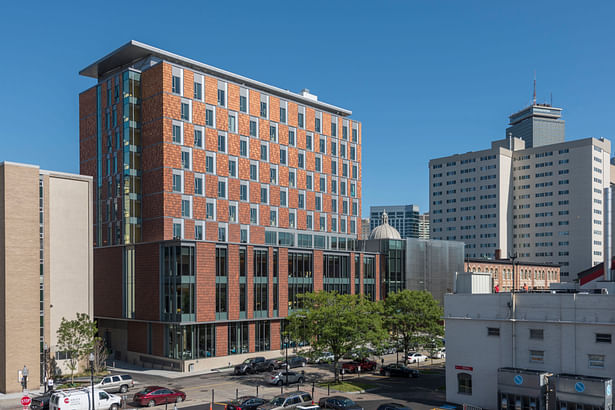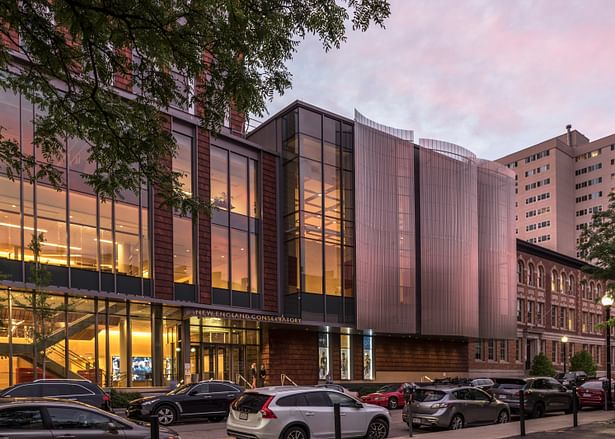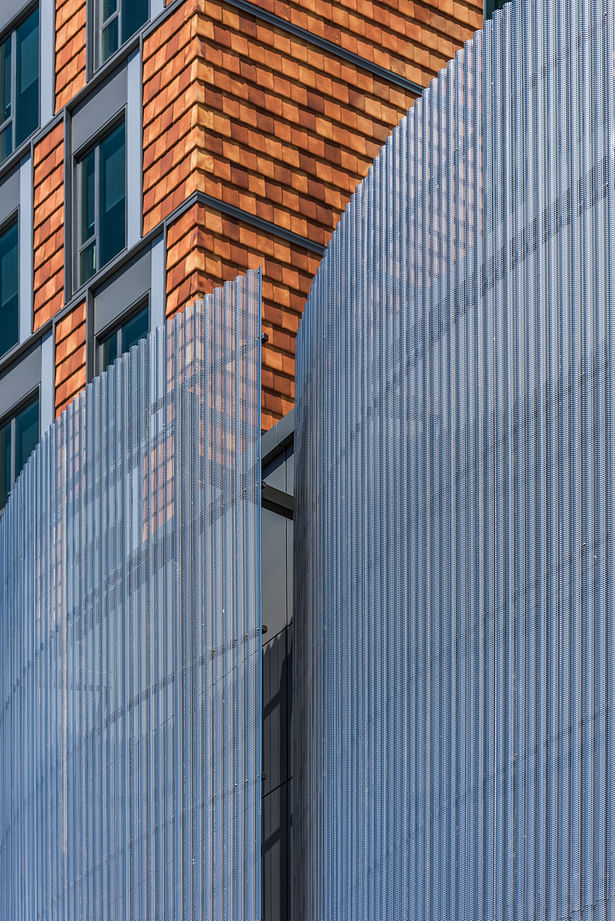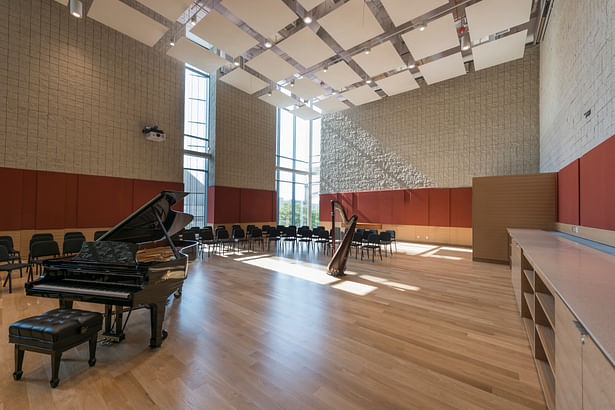

Asian/Pacific Islander owned
Boston, MA

The New England Conservatory offers undergraduate, graduate, continuing, and preparatory music education and is a cornerstone of the nation’s cultural resources. The core of the conservatory’s campus is Jordan Hall, a national historic landmark restored by ABA.
The 125,000-square-foot Student Life and Performance Center, NEC’s first new construction since 1959, brings together housing for more than 250 students, a dining commons, student and community services, rehearsal and performance areas, and a new music library for print, digital, and archival resources. The design introduces a pedestrian friendly streetscape, emphasizes sustainability, and sources regional materials. The residential tower’s unique terracotta tile façade is paired with a performance podium clad in a light-filtering stainless steel curtain. Within the podium, a black box opera workshop, orchestral and jazz rehearsal rooms, small ensemble room, and acoustically isolated recording studios significantly expand the facilities available to conservatory students. Residential
floors offer a mix of rooms and lounges with broad views of the city. Students immersed in the demanding world of professional music now have easy access to spaces of retreat and relaxation.
The project creates a vibrant new setting for the arts, invigorating NEC’s urban presence and cultural impact. Gensler was ABA’s Associate Architect and Architect of Record.
Status: Built
Location: Boston, MA, US
Firm Role: Design Architect
Additional Credits: Gensler (Associate Architect); Tishman Construction Company; LeMessurier Consultants; Alteri; CRJA | IBI Group; Haley & Aldrich; Nitsch Engineering; Sladen Feinstein Integrated Lighting; Fisher Dachs Associates; Brailsford & Dunlavey; Ricca Design Studio; Kirkegaard Associates; R. W. Sullivan Engineering; Howard/Stein-Hudson, Inc.; Simpson Gumpertz & Heger





